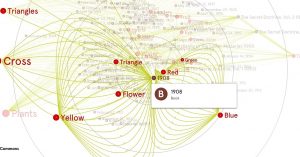By Emily Leon
Abstract: Hilma af Klint, an oft-cited but underresearched Swedish artist, is often included in art historical literature on art and spirituality. And yet, the assumed art world affinity between af Klint and other leading voices on the topic – above all, the Austrian philosopher and esotericist Rudolf Steiner and Russian artist Wassily Kandinsky – demonstrates an urgency to place af Klint within a framework she doesn’t quite belong. This has subsequently led to a misunderstanding of her complexity as an artist and the broader question of spirituality and art. A lack of thorough visual analysis of her early works in much of the secondary scholarship, in addition to the absence of archival research, allows for these speculative claims. However, attending to a closer analysis of her visual imagery as well as available archival information questions the supposed affiliation of af Klint in particular to the assumed work of Steiner. The accepted narrative of af Klint’s relationship to Steiner claims he negatively impacted her works between the years 1908 and 1912. I employ analog, digital, and historical methods to explore this interesting albeit problematic encounter between af Klint and Steiner. These methods afford the opportunity to consider these connections in new and different ways. Analog, digital, and historical methods establish that the Steiner narrative in much of the secondary literature can only be understood as speculative. In addition, digital methods afford an opportunity to analyze this particular moment anew with the assistance of interactive data visualization software and text analytics systems. These systems not only indicate that there was no shift in her iconography before 1908 and after 1912, but also demonstrate the importance of re-evaluating this particular moment in af Klint’s life.
